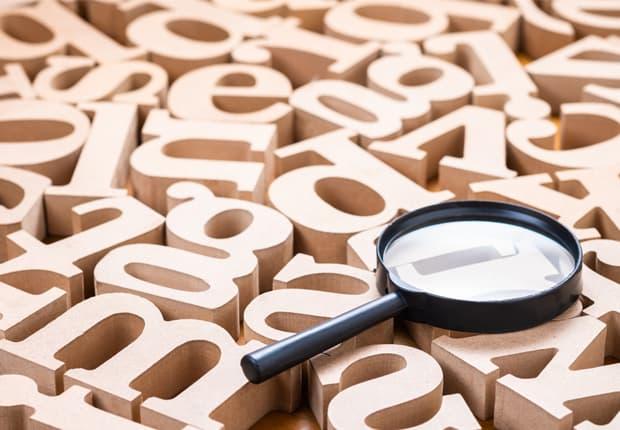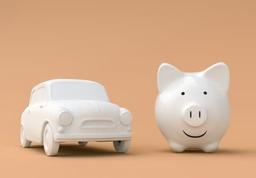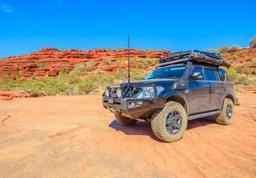Common car industry terms you should know
Choosing the right make and model which ticks all the boxes; deciding which optional extras you want; shopping around and negotiating (hello, anxiety!) for the best deal; working out whether you want to trade-in or sell your old car privately… The car-buying process can be stressful enough without the added confusion of all the terms that accompany it all.
In this article, we delve into a long list of the more common terms you may come across when you’re in the market to buy a new car to ensure your journey is as stress-free and smooth as possible.
4WD
Also known as 4x4, these are generally larger SUVs where power can be sent to all four wheels at the driver’s discretion using onboard controls. Unlike AWD vehicles, they will often have additional controls for things like low range and diff lock available as well.
ABS
Short for Anti-lock Braking System, it senses when any wheels have locked up (or are just about to) due to braking suddenly and reduces the amount of force the brakes are applying to that wheel to stop the lock-up from happening.
ACC
Adaptive Cruise Control measures traffic in front of you to increase or decrease speed accordingly while it’s activated.
AEB
A reasonably new addition to the collection of driver assist systems, AEB (Autonomous Emergency Braking) uses radar technology to detect when a collision is imminent and applies the brakes automatically.
AWD
Not to be mistaken for 4WD, an All Wheel Drive car is one that drives all of the wheels, all of the time and are generally accepted as smaller vehicles which are lower to the ground than 4WDs such as the Mitsubishi ASX and Subaru Forester.
Balloon payment
Also known as the final residual payment, this is the amount of money owing at the end of a lease term to buy the car out and take full ownership.
Clicks
Slang for kilometres.
CVT
Continuously Variable Transmission. This type of transmission is able to continuously change its gear ratios which not only means it’s running at optimal efficiency no matter which speed you’re going, but also is incredibly smooth as there’s no clunky shifting down if you put your foot down and require more power.
Dealer delivery charges
All costs involved for the dealership to get the car ready to be driven off the lot, including everything from removal of protective tape upon delivery to washing and paperwork.
Diff lock
Short for lockable differential, when activated this causes both wheels to rotate at the same speed to provide better traction when tackling difficult terrain.
Drive-away
The total price it costs with absolutely everything included (purchase price, on-road costs, etc.) to get in the car and drive it off free and clear.
ESC/ESP
Electronic Stability Control/Program (aka Dynamic Stability Control) is a system that detects when a driver loses steering control and automatically applies the brakes to a particular wheel.
Extended warranty
Sold as an added extra, an extended warranty will provide cover for particular issues with the vehicle (these differ depending on the extended warranty) that may be experienced after the manufacturer’s warranty has expired for a certain period of time.
FWD
Front Wheel Drive vehicles send power to the front two wheels.
Horsepower (HP)
This is the amount of power the engine is able to produce or the rate at which work is done. It is calculated by multiplying torque and RPM (revolutions per minute) and dividing this figure by 5,252.
Hybrid
A hybrid car is one that uses two (or more) methods of powering its movement. The common setup currency for hybrids is using an internal combustion engine in conjunction with an electric engine.
ISOFIX
A universal international safety standard for attaching child safety seats and capsules into vehicles which entered the Australian market in 2014.
Kilowatt (kW)
The amount of power that an engine can put out measured per 1000 Watts.
LDWS
A Lane Departure Warning System is another relatively new addition to the growing list of driver assist features, and it uses both cameras and sensors to detect if a car is drifting out of a lane, at which time it will alert the driver.
Lease
A car lease is when you finance a car and make monthly repayments over a certain length of time. Once you reach the end of your term, you have the option to make a balloon/residual payment and keep the car or return the vehicle and get something different on a new lease.
Find out more about leasing by speaking with our mates at Stratton Finance today.
Low range
Low range gearing means the vehicle will drive much slower as the axle spins at a much lower RPM than usual, however offers a substantial increase in torque. This is used for terrains including sand dunes, steep inclines and declines, mud, snow and other situations where it’s not speed, but power that’s needed.
LSD
WIth a Limited-Slip Differential, should one of your wheels lose traction, instead of sending all power to that wheel the LSD keeps providing power to the wheels with maintained grip.
Make
The brand of car (e.g. Ford, Subaru, Toyota, etc.)
Model
A particular line of cars built by the brand. Using a Ford Everest as an example, the make is Ford and the model is Everest.
Novated lease
If your employer offers novated leasing, you can finance a car and make your repayments using pre-tax salary which can help reduce your total taxable income and, as such, reduce how much tax you need to pay*.
Have a chat with Stratton Finance today to find out more about novated leasing.
On-road costs
This is generally a tally of four things; dealer delivery charges, stamp duty, registration fees, compulsory third party insurance.
Principal
The amount of money borrowed from a lender.
Resale value
The resale value of a vehicle is the estimated amount of money you’ll be able to get when selling the car in the future.
RPM
Revolutions Per Minute. This is the total amount of times the crankshaft in your engine turns every 60 seconds.
RWD
Rear Wheel Drive cars have all power from the engine sent to the rear wheels.
Stamp duty
A government tax incurred when purchasing a vehicle, the amount of stamp duty you pay will depend on how much you pay for the car and which state you’re in (visit your state government’s website to find a calculator).
Sticker price
The price of a vehicle that’s advertised on the window.
Pro tip: Never, ever pay sticker price! You’ll always be able to negotiate to a sale price well below what’s advertised.
TCS
A Traction Control System detects wheel spin and contains it by cutting power and/or applying brakes where required.
Term
The length of your lease agreement or loan.
Torque
A car’s torque is the amount of turning power it has - its rotational force - and it’s measured in Newton-metres (Nm). Torque is important for acceleration and also higher torque is necessary for bigger, heavier vehicles such as SUVs and the like. It is also important for towing and four-wheel driving.
Trim
We’ve discussed make and model already, and trim is the offset of the model. Using the same example, the Ford Everest, it currently offers several trims that include Ambiente, Trend, Sport and Titanium (with derivatives of each re; engine and gearbox).
VIN
Every vehicle has a unique Vehicle Identification Number (aka chassis number) installed during its build.
Forego the confusion and buy through carconnect
Whether you’ve got a bit of a dodgy memory and don’t think you’ll be able to recall any of this lingo when you need it or you’d simply prefer not to have to concern yourself with any of it in the first place, we’ve got you covered.
At carconnect, we’re changing the way Aussies just like you buy cars. Search for the make and model you want and when you’ve found the perfect car for you, simply leave us with a few basic details and we’ll get to work.
What do we mean by that? Well, to make sure you’re getting a piping-hot deal for your new car we’ll tender out to our impressive network of dealerships around Australia and in no time at all, you’ll be presented with the latest and greatest deals. Then you’re free to pick the one you want and arrange payment, and we’ll even help arrange for it to be delivered directly to you or picked up click & collect style!
* None of the information in the above article should be considered personal or financial advice. You should seek advice from a professional such as your accountant who has an understanding of your personal situation prior to taking on financial products.




















